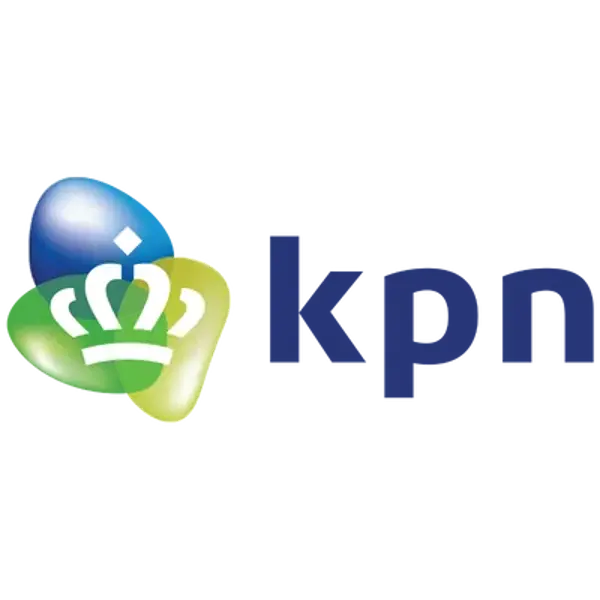KPN wants to make e-invoicing via Peppol the norm for business customers
Every year, KPN sends about 5 million invoices to its business customers. These are now almost all pdfs, but Hans Hodes, as product-owner billing business market, has the ambition to switch to e-invoicing via Peppol. "It is safer, gives less possibility for mistakes and you save time and money," says Hodes.
Hodes is responsible at KPN for the way the outbound invoice flow to business customers is set up. He is in charge of the ground rules for handling those invoices. "E-invoicing started with us in the mid-1990s with the big supermarkets. They required us to send e-invoices to them," says Hodes. "This was still quite complicated back then and only big companies really got it up and running. It was based on Electronic Data Interchange (EDI) which was also used for orders and order confirmations. We ourselves hardly used it at all. What we see now is Peppol making e-invoicing accessible to all companies. At KPN, we therefore want to move towards a situation where e-invoicing is the norm. To start with for all our SME customers and the large corporates. In a year or two we want to get to that point."
Transition to e-invoicing
"At the moment, about 3 per cent of KPN's business customers can be reached via Peppol, we have recently measured that," says Hodes. "To those customers we can start sending e-invoices. So we are really at the very start, but I anticipate that this will change very quickly. From May 2021, we have set up a change process for our customers that will allow them to switch to e-invoicing. In the second half of the year, those customers can also turn e-invoicing on or off themselves via the KPN website, is the plan."
Less overhead
"We want our customers to have as little administrative overhead as possible from everything to do with invoices. By reducing manual invoice processing and through automation, they have more time for the activities that earn their money. The idea is that we unburden our customers with e-invoicing through Peppol because it is more secure, less likely to cause errors and therefore less rework. You simply save time and money as a supplier and customer with e-invoicing. That's where we want to go," said Hodes.
Good agreements needed
E-invoicing goes smoothly and very quickly, provided you make good agreements. In larger companies, the PO number (Purchase Order Number, ed.) is the essential link in this, says Hodes. It forms the administrative link between a contract and the delivery of goods or services. "The function of the PO number is still a little too often missing in discussions about e-invoicing. It is a very important link that requires good agreements and communication," Hodes believes.
The latter also applies to the invoicing process as a whole. Hodes: "For successful e-invoicing, it is important that the sender and receiver set up their process well together. That doesn't always happen yet. Perhaps the run-up is longer if you take more time for alignment, but this then gives fewer to no operational problems afterwards. KPN and Rijkswaterstaat, for example, successfully switched to e-invoicing in this way in March 2021, after thorough preparation."
Status messages desirable
"Status messages can provide a lot of additional benefit when processing e-invoices," Hodes says. "They are already technically possible, but not yet implemented at KPN. I'll give an example of how it would work in practice: if you send an invoice via Peppol, you get a feedback message from the recipient shortly after sending and you know whether or not your invoice has been accepted in their system. That gives you the ability to take action on day two or three if something is not right instead of day 31 or 61. I see that as a big additional benefit," Hodes said. "There are big operational gains to be made with that."
Getting started with e-invoicing
For companies wanting to start e-invoicing, two crucial pieces of equipment are needed: financial software suitable for it and access to Peppol. Hodes: "If you have a package suitable for e-invoicing, you also need access to Peppol. Some packages have this built in, but sometimes not. In that case, you can work with a separate Peppol access provider. These are listed on the website of the Dutch Peppol authority. That gives you the freedom to talk to some of them and make your choice."
Encourage e-invoicing
Suppliers of financial software could encourage e-invoicing much more, thinks Hodes. "I find that suppliers of financial packages do not emphasise enough yet that they support e-invoicing via Peppol for incoming and outgoing invoices. Ask for ten leaflets from any package suppliers and I think you won't find anything about e-invoicing in the first few pages. Nor is it pontifically mentioned on their websites. As far as I am concerned, the key to the success of e-invoicing lies in good cooperation with financial software vendors."
Open standards
Peppol is a network that uses open standards, and KPN is really committed to this. Hodes says: "For example, we don't make special connections with companies like Ariba, Tungsten or Coupa. Those process invoices through private networks that are unsuitable for Peppol invoices. With Peppol, you say: we have an open network with different providers and with that you can reach the whole world, just like via e-mail or phone. That is what Peppol does for invoices and in the future also for orders, which is our preference."
Source: NMBF
